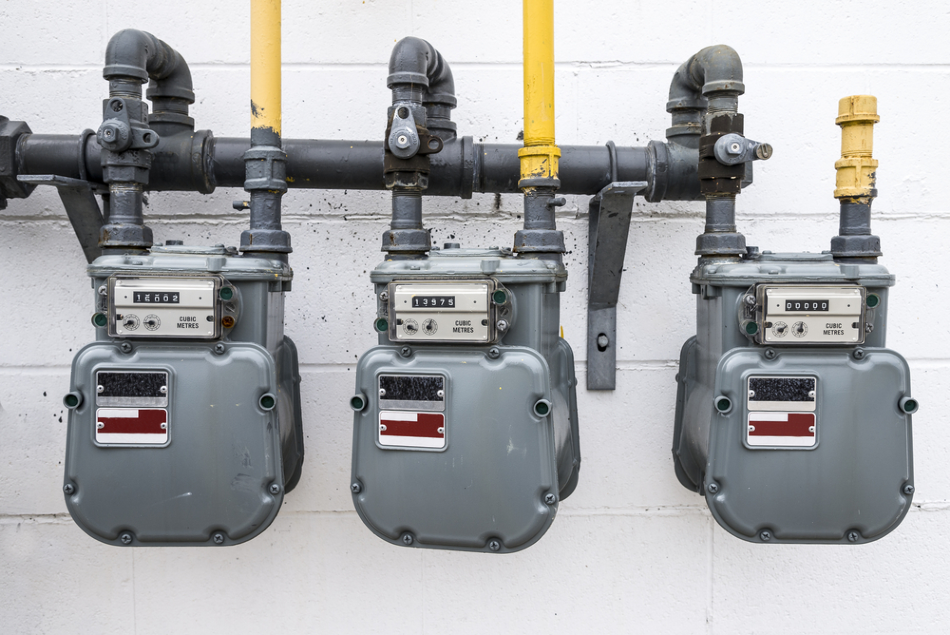By Kalwinder KaurJul 30 2013

Image Credit: Ken Felepchuk/Shutterstock.com
Article updated on 09/03/20 by Jo Finchen-Parsons
A gas meter is a specialized flow meter that can measure the volume of fuel gases such as propane and natural gas. It is difficult to measure the volume of gas because measured volumes are greatly affected by pressure and temperature.
A defined volume of gas can be measured using a gas meter irrespective of the quality or pressurized quantity of gas that flows via the meter.
Types of Gas Meter
The volumetric flow rate of gas is measured using a range of gas meters. These meters are designed to detect the type of gas and a variety of flows.
Some major types of gas meter are discussed in the following sections.
Diaphragm Meters
These gas meters have four measurement chambers linked together to form a unit that is separated by a diaphragm and a deformable wall.
These diaphragms are connected via a rotating piston. The quantity of gas passing through the diaphragm meter can be directly measured if the volume of each chamber is already known.
Diaphragm meters can also be employed with pulse generators for providing a meter reading. However, a leakage from moving parts and the diaphragm is the leading cause of measurement errors when using diaphragm meters.
Rotary Displacement Meters
Two rotating impellers placed opposite each other within a housing unit make up a rotary displacement meter.
The impellers are positioned so that their cross-sections are perpendicular to the rotating axis, and the gap between the impellers and housing is very small. The amount of gas can be directly measured if the volume of each chamber is already known.
During the measurement, the gas molecules tend to run through the meter continuously, which results in pulsation during calibrations. Silencers can be used to avoid significant measurement errors.
Turbine Meters
A gearwheel system, a turbine wheel, an extrusion section and a sealed housing unit are all main components of the turbine meter.
The moment the gas flows, the turbine wheel begins to rotate. The rotation of the turbine wheel is proportional to the velocity flow. Therefore, the volume of gas can be calculated with respect to the rotation of the wheel.
Calibration of Gas Meters
The gas meters should be in good operational condition during usage and should possess a valid calibration certificate. It is necessary to perform periodic calibration of the gas meters to avoid generating significant errors.
The common calibration practice involves setting a short recalibration period for the new gas meters, then performing sequential calibrations. This allows the drift between each calibration to be estimated and users can determine whether to increase or decrease the recalibration interval.
Applications
The following are the major applications of gas meters:
- They are used in offshore and onshore drilling rigs to detect and measure gas quantities.
- They can be retrofitted to existing rig flare lines to measure gas volumes under managed pressure drilling and underbalanced drilling operations. One gas meter used for drilling applications is the CARBONTRACKER Gas Meter by Mi Swaco. The following video shows exactly how this product works to measure the volume of gas while drilling.
M-I SWACO CARBONTRACKER Gas Flow meter
Video by M-I SWACO Egypt Branch.
The CARBONTRACKER gas meter is designed to detect gas flows of down to 0.1 ft/sec. This technology is combined with pressure and temperature sensing elements to determine gas-flow velocity, providing accurate measurements of mass flow rates.
Disclaimer: The views expressed here are those of the author expressed in their private capacity and do not necessarily represent the views of AZoM.com Limited T/A AZoNetwork the owner and operator of this website. This disclaimer forms part of the Terms and conditions of use of this website.